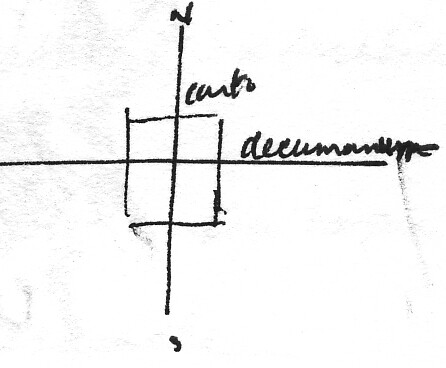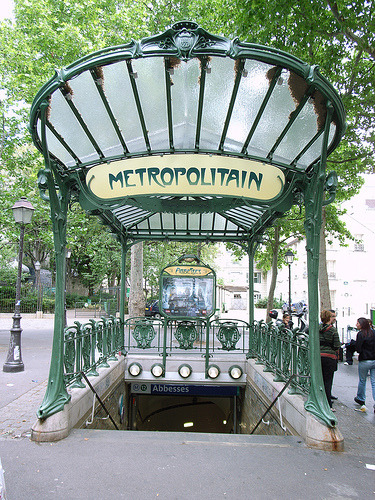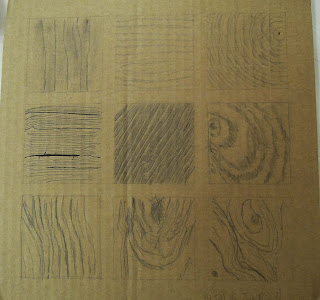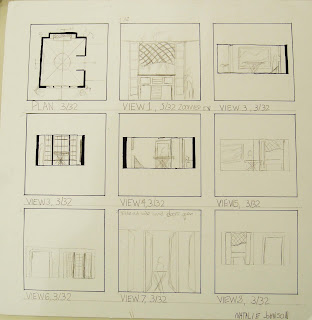
Tuesday, February 28, 2012
Monday, February 27, 2012
Living as Royalty in the 16th century
Pictuers: background: http://theredlist.fr/media/database/architecture/history/architecture-europeene/renaissance/chateau-de-chambord%20/010_chateau-de-chambord_theredlist.jpg
Top left : http://blogs.iesabroad.org/wp-content/uploads/2012/01/mygatt.paris_.chambord3.jpg
Bottom left: http://www.francemonthly.com/n/0302/images/chambord-stairs.jpg
Top left : http://blogs.iesabroad.org/wp-content/uploads/2012/01/mygatt.paris_.chambord3.jpg
Bottom left: http://www.francemonthly.com/n/0302/images/chambord-stairs.jpg
Thursday, February 23, 2012
Cathedrals
Cologne And Salisbury-
There is a lot of light that was need to enter into the cathedral because there
was no artificial way of lighting all that space, and then the windows were
used a big painted bible story book. Many of the stained glass windows would be
of important bible stories because most people could not read and they were not
allowed to read the bible themselves. Also light was symbolic, the light of God
and the way the sun would rise and light the church from one end and when the
sun would set it would be at the other, this gave the space order as the light
moves throughout the space.
 Cologne And Amiens- With the first glance at the two floor plans the buildings seam to be quite similar but they have their differences. Both buildings were built in the so called "dark ages", and if this time was to be so "dark" and undereducated compared to the Renaissance, how are there such buildings as these? These buildings were commissioned by the greatest power in the land at the time, the Catholic church, where the master architects were sought out and commissioned to build the cathedral for power and glory.
Cologne And Amiens- With the first glance at the two floor plans the buildings seam to be quite similar but they have their differences. Both buildings were built in the so called "dark ages", and if this time was to be so "dark" and undereducated compared to the Renaissance, how are there such buildings as these? These buildings were commissioned by the greatest power in the land at the time, the Catholic church, where the master architects were sought out and commissioned to build the cathedral for power and glory.
 Cologne And Amiens- With the first glance at the two floor plans the buildings seam to be quite similar but they have their differences. Both buildings were built in the so called "dark ages", and if this time was to be so "dark" and undereducated compared to the Renaissance, how are there such buildings as these? These buildings were commissioned by the greatest power in the land at the time, the Catholic church, where the master architects were sought out and commissioned to build the cathedral for power and glory.
Cologne And Amiens- With the first glance at the two floor plans the buildings seam to be quite similar but they have their differences. Both buildings were built in the so called "dark ages", and if this time was to be so "dark" and undereducated compared to the Renaissance, how are there such buildings as these? These buildings were commissioned by the greatest power in the land at the time, the Catholic church, where the master architects were sought out and commissioned to build the cathedral for power and glory. Wednesday, February 22, 2012
Monday, February 20, 2012
Wednesday, February 15, 2012
Monday, February 13, 2012
The Foundations that we must never forget.
Every day we
interact with the world around us on various levels. At the most personal level
we interact with the snooze button of our alarms, and the “brew” Button of the
coffee maker. Then our interaction with the world around us takes a step the
moment we turn on the tv, or our laptops, we are bombarded with a wave of
information about the world stock exchange and the current political situation
at home and abroad. With that one push of a button we are participants in our
local, national and international world, though we hear about far off places
where there are struggles, we secretly think to ourselves that it will never
happen here. With today’s culture we dismiss other people by saying they are
different from me and we don’t stop to observe what we do have in common. As we
examine the history of design all over the world it becomes clear that the
foundations of design are all essentially related.
In the first week of
class the mantra “object, space, building, place” was introduced. Also we
talked about scale, by watching “the powers of ten” by Charles and ray Eames. Most
importantly we talked about the universal circles. We began our journey and analization
of architecture with Stonehenge, and its purpose. Was it meant to be a sundial,
or an alter for the afterlife because of the circle of burial mounds just
downstream of Stonehenge. So we stared with the most fundamental shape that
repeats and evolves into new shapes throughout time.
Then in week two we
continued with the “building blocks” of architecture, with the theme of
Circles, Groves and Stacks. We discussed how all buildings are made from these
three structures or a combination of these three and how they came from nature.
Circles are from the sun and moon, Groves are like a man made forest and stacks
are like the layers of the human body. We talked about the idea of a prototype,
and archetype and a hybrid. We looked at an example of this in columns. There is
the Tuscan, the prototype, then there are the most well known the Doric, Ionic
and Corinthian, the archetypes, and from them came the hybrid the composite.
 Then in the third
week we investigated parts of Greek and roman design that appear again and
again throughout design, the column. We talked about the Doric, Ionic, and
Corinthian columns, and the essential organization parts of a building, the
porch, the court and the hearth. We talked about the acropolis as an example of
these basic structures but these also show up in Egyptian culture in their
temples. In the acropolis there are steps that lead up to the acropolis which
has the porch, then in the middle of the acropolis there is the court and the
hearth was in the middle section of the Erechtheion. We also saw columns in the
Xi’an palace that held the terracotta warriors, had many columns around the
outside and was stacked to look taller.
Then in the third
week we investigated parts of Greek and roman design that appear again and
again throughout design, the column. We talked about the Doric, Ionic, and
Corinthian columns, and the essential organization parts of a building, the
porch, the court and the hearth. We talked about the acropolis as an example of
these basic structures but these also show up in Egyptian culture in their
temples. In the acropolis there are steps that lead up to the acropolis which
has the porch, then in the middle of the acropolis there is the court and the
hearth was in the middle section of the Erechtheion. We also saw columns in the
Xi’an palace that held the terracotta warriors, had many columns around the
outside and was stacked to look taller.
Then in the fourth
week we talked about commodity, firmness and delight (utilitas, firmitas, and
venustas). Commodity is how well the space can function. Firmness is how strong
the space is and Delight is the aesthetic appeal of the space. We talked about
the Roman empire and how they had planned cities each with a cardo and
decumanus, two streets that ran north-south, and east-west. Also each Roman
city had aqueducts that brought clean water for drinking and bathing. In any
Roman city there were a number of gathering places such as the baths,
basilicas, the market and the forum. Roman cities also had a number of
entertainment venues like the coliseum and the Amphitheatre. Also there came
two major pieces of architecture, the arch and the dome. These two pieces will continually
show up again and again in design history in churches and large buildings, and
still do today.
In this unit we have
explored a range of ideas and concepts that will continue to grow and change as
we learn more about design history. If we look back at these basic form of
design there is always a connection and it is vital that we never forget our
connections to the whole world.
Sunday, February 12, 2012
Art Nouveau
 SO I was told by Tommy to go look up Art Nouveau subway stations in Paris. Then when I googled them, I was freaked out a bit. The lettering on the signs is so creepy. but then as I started to look at the whole style of Art Nouveau I began to understand the connection between my project and what Tommy was referring too. Like in this picture, the branches across the ceiling. The architectural style is exactly what I was describing in my critique on Friday.
SO I was told by Tommy to go look up Art Nouveau subway stations in Paris. Then when I googled them, I was freaked out a bit. The lettering on the signs is so creepy. but then as I started to look at the whole style of Art Nouveau I began to understand the connection between my project and what Tommy was referring too. Like in this picture, the branches across the ceiling. The architectural style is exactly what I was describing in my critique on Friday. Saturday, February 11, 2012
Wednesday, February 8, 2012
From layer To Layer
The rhythm carries me
From layer to layer
At each level there is
contrast
But from the top there is
Unity.
Music and Architecture
So today during History and Theory we were talking about music and architecture. I thought of Frank Ticheli's "Angels In the Architecture." I heard the piece played by the Virginia Tech Wind symphony two years ago. And as we talked in class, sort of seamed fitting to the topic. The layers, the contrast, harmony, style its all there.
I found the Program notes on the piece.
"Angels in the Architecture was commissioned by Kingsway International, and received its premiere performance at the Sydney Opera House on July 6, 2008 by a massed band of young musicians from Australia and the United States, conducted by Mathew George. The work unfolds as a dramatic conflict between the two extremes of human existence-one divine, the other evil. The works title is inspired by the Sydney Opera House itself, with its halo-shaped acoustical ornaments hanging directly above the performance stage.
Angels in the Architecture begins with a single voice singing a 19th-century Shaker song:
Just as Charles Ives did more than a century ago, Angels in the Architecture poses the unanswered question of existence. It ends as it began: the angel reappears sings the same comforting words. But deep below, a final shadow reappears-distantly, ominously."
Source:http://www.windrep.org/Angels_in_the_Architecture
Though the history behind the piece only has a little to do with Architecture, It seemed to connect the lesson to something I knew about.
"Angels in the Architecture was commissioned by Kingsway International, and received its premiere performance at the Sydney Opera House on July 6, 2008 by a massed band of young musicians from Australia and the United States, conducted by Mathew George. The work unfolds as a dramatic conflict between the two extremes of human existence-one divine, the other evil. The works title is inspired by the Sydney Opera House itself, with its halo-shaped acoustical ornaments hanging directly above the performance stage.
Angels in the Architecture begins with a single voice singing a 19th-century Shaker song:
I am an angel of LightThis "angel" - represented by the singer - frames the work, surrounding it with a protective wall of light and estalishing the divine. Other representations of light, played by instruments rather than sung, include a traditional Hebrew song of peace ("Hevenu Shalom Aleichem") and the well-known 16th-century Genevan Psalter, "Old Hundredth." These three borrowed songs, despite their varied religious origins, are meant to transcend any one religion, representing the more universal human ideals of peace, hope, and love. An original chorale, appearing twice in the work, represents my own personal expression of these aspirations.
I have soared from above
I am cloth'd with Mother's love.
I have come, I have come.
To protect my chosen band
And lead them to the promised land.
Just as Charles Ives did more than a century ago, Angels in the Architecture poses the unanswered question of existence. It ends as it began: the angel reappears sings the same comforting words. But deep below, a final shadow reappears-distantly, ominously."
Source:http://www.windrep.org/Angels_in_the_Architecture
Though the history behind the piece only has a little to do with Architecture, It seemed to connect the lesson to something I knew about.
Tuesday, February 7, 2012
Subscribe to:
Posts (Atom)















































